#study japanese
Text

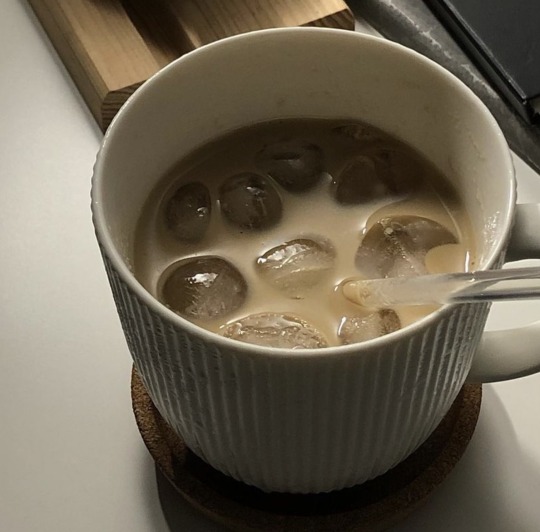
#italy#studyabroad#study motivation#studyinspo#studyspiration#studyspo#studystudystudy#studyvisa#student life#study aesthetic#study mode#study#study chinese#study tips#study time#study japanese#study blog#study notes#studying#art study#studyblr#study hard#study studying studygram studyblr studyabroad studyhard studyspo studymotivation studytime studyinspiration studyinspo studyaccount studyblo#studytube#studytool#study techniques#study tbt.#study table#study tumblr#study usa
2K notes
·
View notes
Text
Japanese Reading Resources for Absolute Beginners
A question I encounter often is "How much Japanese should I study before I can begin reading in Japanese?"
From my experience as a learner and reader myself and from managing a Japanese book club for other learners I can honestly say that you can start way earlier than you probably think!
There are many resources that only require knowing hiragana. Those texts usually teach vocabulary through pictures and only use basic grammar.
Some are even simpler than that: The Japan Foundation's Hiragana Books are great for those, who are still remembering hiragana characters. Every short book introduces only 1-2 new characters, so it's a great reading exercise for those who've just started.

The free graded reader 「どうぞ、どうも」 by the NPO Tagengo Tadoku only uses the words 「どうぞ」 and 「どうも」 to write an entire story. Again, this makes for a great exercise in reading hiragana and understanding context. Another "level 0" recommendation by the same NPO would definitely be 「しろい?くろい?」. This book uses the full range of hiragana characters but the grammar is simple and all used vocabulary is illustrated.
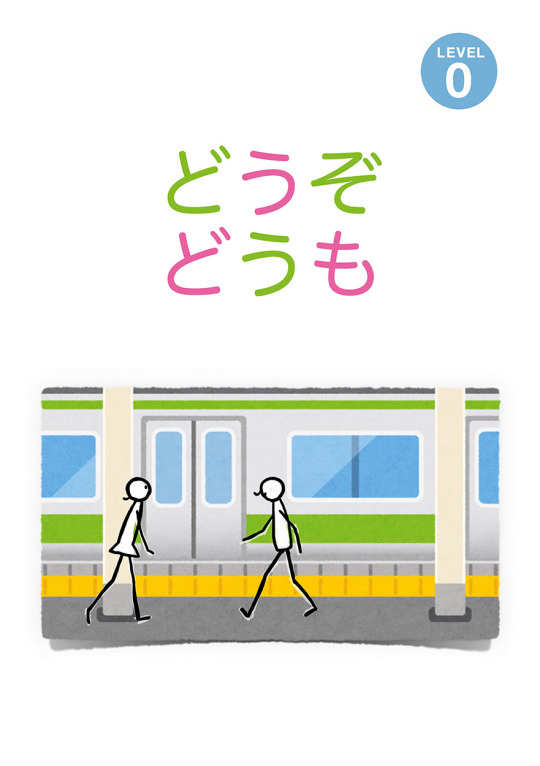
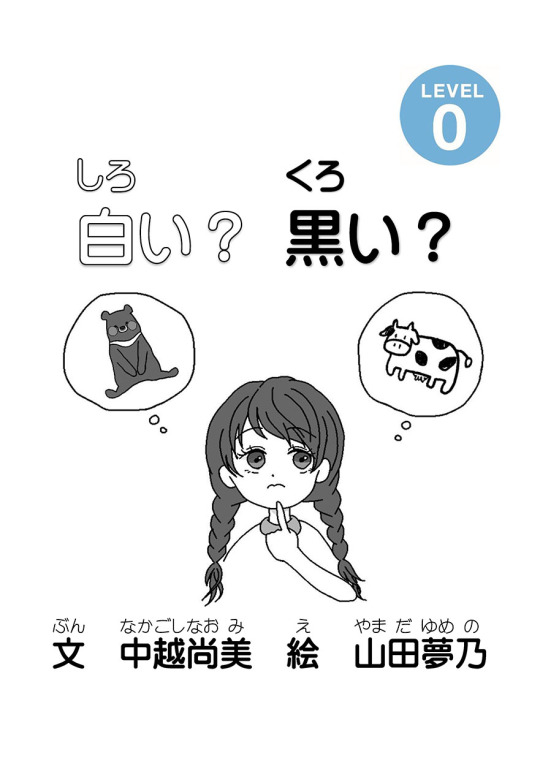
Another site with great resources for absolute beginners is Nihongo Tadoku Dōjō. If you have memorized both hiragana and katakana and know how the particles を and で work you will be able to read this text about stationary (ぶんぼうぐ) and understand everything by looking at the pictures!

The resources linked so far can all be accessed completely free on the linked websites. If you have the money to spare, please also have a look at the box 「スタート」 from the series reberubetsu nihongo tadoku raiburarī published by the NPO Tagengo Tadoku and ASK (affiliate link). This box includes 8 little books in very simple Japanese.
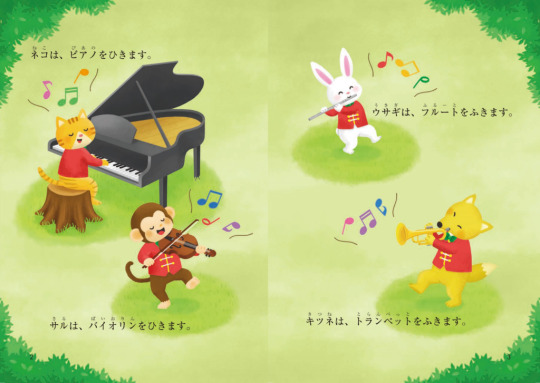
All these texts for absolute beginners will get you started reading in Japanese with very little knowledge of characters and vocabulary.
Reading in Japanese is a skill that requires practice. But once you get used to it, it can be such a valuable tool to reinforce new vocabulary and grammar. So please don't wait until you're "ready" before you start reading - start early at your own level!
#my book reviews#reading in japanese#study japanese#learning japanese#日本語#japanese books#やさしい日本語#free graded readers#free tadoku graded readers#nihongo tadoku dōjō#absolute beginner level#japanese langblr#japanese language#japanese reading comprehension#japanese free reading resources#japanese reading resources
637 notes
·
View notes
Text
YouTube Channels for Kids by JLPT Levels
(。•̀ᴗ-)✧ resources

こんにちは, Japanese learners! Learning a language is an exciting adventure, isn't it? To add a spark of joy to your Japanese learning journey, here's a collection of YouTube channels tailored for kids. Organized by JLPT levels, these channels offer a blend of education and entertainment for learners at different stages. Keep in mind, though, that JLPT levels aren't an exact science like math – language learning can be subjective in terms of difficulty. However, these resources provide a fantastic starting point and a fun way to explore the world of Japanese language and culture. Let's hop into this delightful world of animated learning and playful discoveries!
Friendly reminder to adjust your way of learning in order to make the most of what you're studying to reach the goal you truly want! read my post about it (ᵔ◡ᵔ)
꒰ა ˚₊ ✧・┈・╴N 5 ╴・┈・𐑺 ‧₊˚໒꒱
— Curious George (N5 level)
— Japanese folk tales/anime series (Japanese audio/Japanese subtitles) from BomBom Academy (N5 level)
— Peppa Pig (N5-4 level)
— Anpanman (N5-4 level)
— NHK education (N5-4 level)
꒰ა ˚₊ ✧・┈・╴N4 ╴・┈・𐑺 ‧₊˚໒꒱
— Cinnamon Roll, Sanrio (N4 level)
— [Anime] Atashin'chi (N4-3 level)
꒰ა ˚₊ ✧・┈・╴N3 ╴・┈・𐑺 ‧₊˚໒꒱
— Sesame Street Japan (N3 level)
— Chibi Maruko Chan (N3-2 level)
꒰ა ˚₊ ✧・┈・╴N2 ╴・┈・𐑺 ‧₊˚໒꒱
— Precure (N2 level)
またね~@inkichan
꒰ა ˚₊ ✧・┈・╴﹕꒰ ᐢ。- ༝ -。ᐢ ꒱﹕╴・┈・𐑺 ‧₊˚໒꒱
#japanese#nihongo#studyblr#learn Japanese#learning Japanese#japanese langblr#langblog#japanese studyblr#日本語#study japanese#japanese resources#free resources#resources#japanese free resources#youtube#JLPT#JLPT N5
275 notes
·
View notes
Text
身の回りにある金属
銀(ぎん)silver (Ag)

アルミニウム aluminum (Al)

金(きん)gold (Au)

銅(どう)copper (Cu)

鉄(てつ)iron (Fe)

水銀(すいぎん)mercury (Hg)
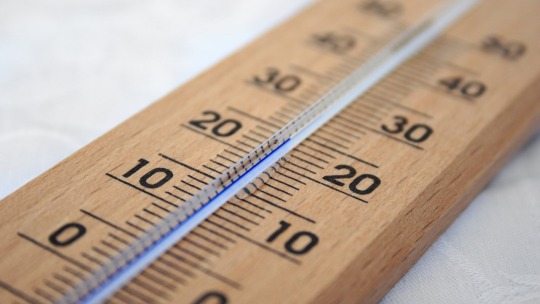
ニッケル nickel (Ni)

鉛(なまり)lead (Pb)

プラチナ・白金(はっきん)platinum (Pt)

錫(すず)tin (Sn)

チタン titanium (Ti)

#語彙リスト#japanese langblr#langblr#studyblr#study motivation#learning japanese#study japanese#japanese studyblr#japanese studyspo#japanese vocabulary#vocabulary list#japan#japanese#japanese language#日本語#日本語の勉強#jlpt n2#jlpt n1#study blog#studyspo#study aesthetic#metal
178 notes
·
View notes
Text
Credit to @japanese_with_josh
I found this really helpful to hear a real life situation- not just from a textbook!
#japanese#language learning#studyblr#日本語#japan#langblr#japanese grammar#study japanese#nihongo#study#learn japanese#langblog#study kanji#travel#jlptn5#kanji#languages#language study#study abroad
661 notes
·
View notes
Text
The 6 Differences Between は and が
DIFFERENCE 1
The important fact is AFTER は
• この犬は私のベットです。This dog is my pet.
You want to emphasize that this is not a stray dog. It is not someone else's pet dog. It is MY PET. So anything comes after は is the main part you want the listener to pay attention to.
The important fact is BEFORE が
• この犬が私のベットです。This dog is my pet.
You want to emphasize that THIS IS THE DOG that is my pet. Not other dogs. Imagine you're at a park and there are 3, 4 other dogs playing together with your dog and you want to tell your friend that THIS DOG is the one that is your pet dog, other dogs are not yours. So, what comes before が is the main part you want to tell the listener.
More examples:
• このケーキはおいしいです。This cake is DELICIOUS! (You want to tell your friend that this cake is indeed very good. Your emphasis falls on おいしい, so you use は, because the important fact is AFTER は.
• このケーキがおいしいです。THIS CAKE is delicious. (You want to tell your friend that among all the cakes on the buffet table, this particular cake you are pointing to is the most delicious one. Others are not good.) Your emphasis falls on このケーキ (THIS CAKE), so you use が, because the important fact is BEFORE が.
DIFFERENCE 2
New information and things that you mention for the first time, use が. Old information or topics that have been mentioned earlier but is now repeated again, use は.
• 学校にマイクという男がいます。There is boy named Mike in my school.
You started the conversation with your friend by saying there's a new student named Mike in the school. That is the first time you mentioned Mike. It is new information, therefore use が.
• マイクはアメリカ出身です。Mike is from America.
You mention Mike the 2nd time now and it is no longer a new information. It is considered old information, therefore use は.
DIFFERENCE 3
Stating facts without adding your personal opinion or judgment use が. By adding your own opinion or judgment, use は.
• 外に猫がいます。There is a cat outside.
You are just merely stating a fact that there is a cat outside. This sentence doesn't include your description about the cat. No personal opinion or judgment about the cat.
• あの猫は白いです。The cat is white in colour.
You are putting your description, your judgment into the sentence about the cat. When you are adding your own thoughts, opinion, description about something, use は.
• 日本の料理はおいしいです。Japanese food is tasty.
You are putting your opinion/judgment about Japanese food in your sentence, therefore, use は.
DIFFERENCE 4
When you make comparison, use は. When you eliminate other options, use が.
• お茶は好きですが、コーヒーは好きじゃありません。I like tea but I don't like coffee.
DIFFERENCE 5
If two actions are done by the same person, use は. If two actions are done by two different persons, use が first, then use は for the second action.
• 私はごはんを食べるとき、テレビを見ます。I have my meal and I am watching TV.
• 私がごはんを食べるとき、父はテレビを見ます。When I have my meal, my father watches TV.
DIFFERENCE 6
To modify a phrase into a noun, use が.
• これは彼女が作ってくれたケーキです。
What cake is this? This is the cake that is baked by my girlfriend. The phrase 「彼女が作ってくれた」 is to modify the cake, to describe about the cake.
Quiz Time
• 部屋は広いです。
• 部屋が広いです。
In English, both sentences mean "The room is spacious." But what is the difference?
In 部屋は広いです, it shows a comparison contrast nuance (read DIFFERENCE 4). If you say this, the listener will believe that you are making a comparison of this room with all the other rooms in the house. You want to say this room is spacious, whereas the other rooms are smaller in size.
In 部屋が広いです, you are merely stating a general fact about this room being spacious (read DIFFERENCE 3). You are not making any comparison. Your sentence has no added personal judgement or opinion. You are stating a fact about the room being spacious.
#japanese#nihongo#studyblr#study blog#study japanese#study motivation#learning#learn japanese#language#grammar#jlpt#jlpt n5#jlpt n4#jlpt n3#jlpt n2#jlpt n1
140 notes
·
View notes
Text
【語彙】フリマアプリ等
In the past year or so, I've sunk quite a lot of money in Japanese second hand goods. It's been quite a pleasant experience to browse through many well described offers where most of the time you get exactly what you want, in great condition and for cheap price.
Without further ado, I've compiled a list of useful vocabulary that one may encounter while shopping on Japanese online marketplaces or フリマアプリ.
General condition:
新品 - new item
中古品 - used item
未使用 - unused
未開封 - unopened, sealed
未視聴 - not played (CD, DVD)
開封済 - opened, unsealed
美品 - in mint condition
使用感 - visible signs of use
人の手に渡った - bought from someone else (ie. the person selling is not the first owner of the item)
帯付き - includes obi
特典付き - includes bonuses
Damages:
傷 or 痛み - general imperfections
汚れ - dirt, stains
染み or シミ - stain
皺 or シワ - wrinkle
擦れ or スレ - scratch
日焼け - sun discolouring
書き込み - writing, notes (in a book etc.)
Seller terms:
プロフィール必読 - please read my profile before purchase
即購入 or 即買い - immediate purchase (ie. without contacting the seller first)
値下げ交渉 - price negotiation
バラ売り - selling separately
まとめ売り - selling together
自宅保存 - stored at home
素人保存 - stored by an inexperienced person
確認済み - checked (f.ex. if the CD is playing well)
Phrases you may see in listings:
神経質な方はご遠慮ください。Please refrain from buying if you are sensitive to the item's condition.
読めればいいという方向け。Oriented at people who only care about reading the item (and don't mind the condition).
PCに取り込んで自宅保管しておりました。After ripping (the CD) it was stored at home.
暗所に保存しておりました。It was stored in a dark place.
再生に問題はありません。No problems with playing (CD, DVD).
ペット、喫煙者ございません。No pets or smokers in the household.
ご了承ください。Please accept it (the item, seller's terms etc.) as it is.
#japanese#vocabulary#polyglot#japanese studyblr#japanese language#study japanese#language studying#language study#language learning#yuria studies
344 notes
·
View notes
Text
[Japanese→English] @panmaumau Tweet — Color Coded Translation

————————————————————————
何も知らない生き物の顔
なにもしらないいきもののかお
The face of a living thing that doesn’t know anything.
————————————————————————
Please correct me if I made a mistake
#color coded translation#japanese#japanese vocabulary#study japanese#japanese lesson#easy japanese#beginner Japanese#learning japanese#japanese lingblr#japanese linguistics#learn japanese#japanese langblr#japanese learning#japanese language#japanese vocab
73 notes
·
View notes
Text
Pitch, Please Pt. 1 [new series alert]

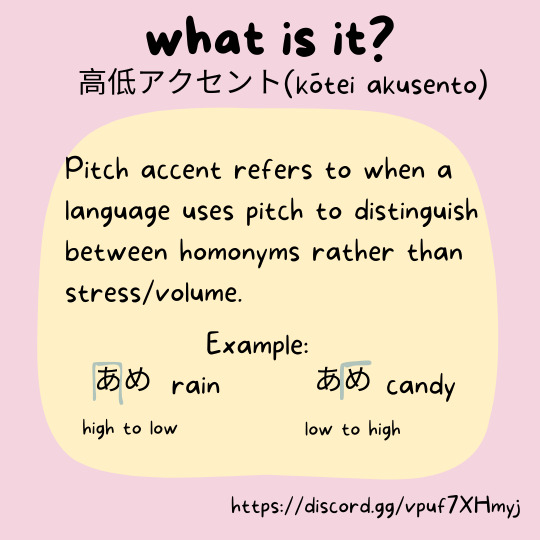
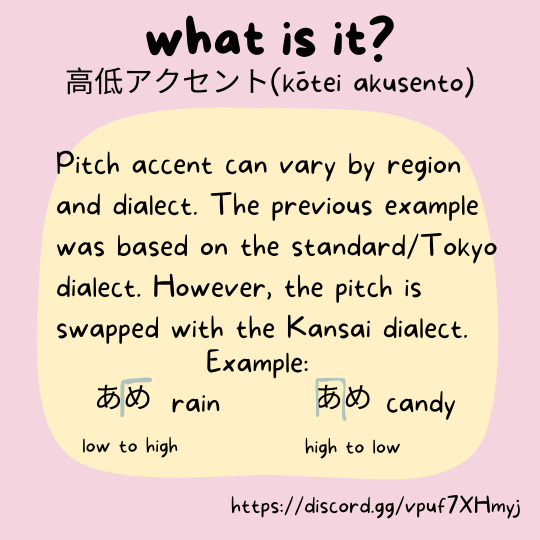


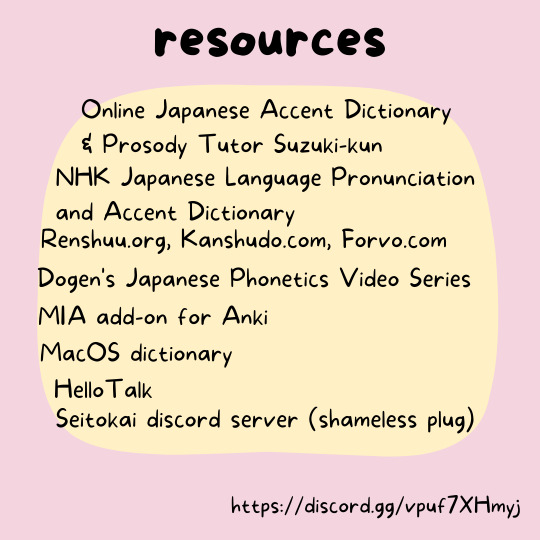

This was launched on the Seitokai IG (seitokaisnihongo). Keep reading this post to get information that is written on the graphics (and the IG caption).
This is a new series that I've been working on for a bit! It'll be discussing pitch accent, dialects, listening comprehension, and anything else that may fall within that category.
If there's a particular dialect that you'd like for us to cover in this series, feel free to stick it in the reblogs, my inbox, my asks, on the Seitokai instagram, or the Seitokai discord server!
Without further ado, here is what the posts say above!
Pitch, Please! Let's talk about pitch accent.
What is it?
Pitch accent, known as 高低アクセント(kōtei akusento) in Japanese, refers to when a language uses pitch to distinguish between homonyms rather than stress/volume. For example: あめ, meaning rain (high pitch to low) vs あめ, meaning candy (low pitch to high pitch).
Pitch accent can vary by region and dialect. The previous example was based on standard/Tokyo dialect. However, the pitch accent is swapped with the Kansai dialect. あめ, meaning rain goes from low pitch to high and あめ, meaning candy goes from high pitch to low.
There are four (4) pitch accent patterns: 平板 (へいばん), 頭高 (あたまだか), 中高 (なかだか), and 尾高 (おだか). These will be discussed in further detail in a later post within this series.
How to work on it?
Listen to native speakers (podcasts, news channels, videos, etc.)
Converse with native speakers (if possible)
Mimic the correct pronunciation
Be willing to ask for help and accept correction
Resources
Online Japanese Accent Dictionary & Prosody Tutor Suzuki-kun
NHK Japanese Language Pronunciation and Accent Dictionary
Renshuu.org, Kanshudo.com, Forvo.com
Dogen's Japanese Phonetics Video Series
MIA add-on for Anki
MacOS dictionary
HelloTalk
If you're looking for fellow learners, there are over 500 of us in the Seitokai discord server (shameless plug) and we'd love to have you!
#japanese#learn japanese#study japanese#pitch accent#japanese dialects#japanese grammar#kanji#vocab#jlpt#reading practice#listening comprehension#reading comprehension#shay's back with another post#pitch please#linguistics#seitokai#grammar
233 notes
·
View notes
Text

Another magazine study session. What’s your go-to thing when you’re tired of textbooks and flashcards but still want to be actively engaging with your target language? I’d love to hear what others do! 😊💕
#langblr#japanese studyblr#studyblr#learn japanese#study japanese#japanese studyspo#study motivation#study notes#studyinspo#study blog
56 notes
·
View notes
Text


#italy#studyabroad#study motivation#studyinspo#studyspiration#studyspo#studystudystudy#studyvisa#student life#study aesthetic#study notes#study chinese#study time#study blog#study#study mode#studyblr#study japanese#study tips#study hard#art study#studying#study tumblr#studytube#studytwt#study tag#study studying studygram studyblr studyabroad studyhard studyspo studymotivation studytime studyinspiration studyinspo studyaccount studyblo#studytool#study table#study tbt.
1K notes
·
View notes
Text
Short Story Collections for Learning Japanese
Short stories are very popular with language learners – and rightly so. Being able to finish even a short tale aimed at native speakers will feel like a great accomplishment.
I had a look at three approaches for intermediate and advanced learners to enjoy Japanese short stories. For each I can also recommend a few matching short story collections:
Short Stories in Easy Japanese

Japanese Short Stories with English Annotations

Parallel Readers

I give my more detailed thoughts on all these short story collections for learning Japanese in my blog post. You can find it here:
#my book reviews#reading in japanese#study japanese#learning japanese#japanese books#easy japanese#graded reader#intermediate Japanese#intermediate to advanced#Japanese classic literature#Japanese literature#Japanese short stories#native material#parallel reader#short story
246 notes
·
View notes
Text
#anime#education#japan#japanese#language#learn japanese#study japanese#japonais#manga#日本#japanesebook
80 notes
·
View notes
Text
小説の語彙力(1)

名詞 // Nouns:
基調(きちょう)basic tone, basic theme
後年(こうねん)in (one's) later years
権現(ごんげ)incarnation
酸味(さんみ)sourness, sour taste
駄洒落(だじゃれ)bad joke
店内装飾(てんないそうしょく)in-store decoration
末裔(まつえ)descendant
装い(よそおい)outfit
動詞 // Verbs:
あやす soothe, comfort, humor
利かせる(きかせる)season (e.g. with salt), bring out, use
渋る(しぶる)be reluctant, be unwilling, balk
なつく become emotionally attached
放る(ほうる)neglect, abandon, leave alone
形容詞 // Adjectives:
渋い(しぶい)bitter, sour, harsh, grim
その他 // Other:
後々(のちのち)later
機転が利く(きてん が きく)be quick-witted
散々(さんざん)severely, harshly
駄々をこねる(だだ)throw a tantrum
#小説の語彙力#語彙リスト#japanese langblr#langblr#language blog#learning japanese#language learning#study japanese#japanese vocabulary#japan#japanese#japanese language#study notes#japanese studyblr#vocabulary#vocabulary list#日本語#日本語の勉強#nihongo#jlpt n1
78 notes
·
View notes
Text
potential verbs
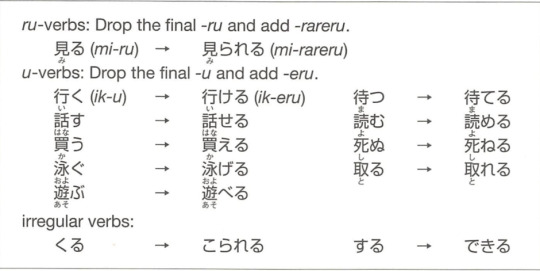
potential verbs are used to say that you can do something.
For example- 私は日本語が話せます。= I can speak Japanese
Another example-
行きませんでした- I did not go (行く)
行けませんでした- I could not go (行ける)
Remember! you also have irregular verbs in Japanese (くる、する) so don't forget that they have a special way to conjugate (shown in table above)
To conjugate potential verbs into their negative form to say that you can not/ could not, here is the table:

The difference between short forms and long forms is that short form is what the word looks like in the dictionary before it is conjugated.
Most verbs take the particles を or が when you change them into the potential- 日本語が話せます。
However, when する is changed into the potential (できる) it almost always only takes が alone.

#japanese#language learning#studyblr#日本語#japan#nihongo#learn japanese#study kanji#learn kanji#langblr#japanese grammar#study japanese#langblog#study
89 notes
·
View notes
Text
The Difference Between に and へ
Most of the beginner textbooks will teach learners that に is used for destination and へ is used for direction but there are some explanation that are missing and that is what confusing to many learners.
• 公園に行きます。
• 公園へ行きます。
Both sentences are correct. Both means "I'm going to the park".
But... there is a slight nuance difference. When you use に, you put the destination (which is the park) as the main thing you want the listener to know that the place you want to go is the park. The final destination you will arrive at is the park.
On the other hand, if you use へ, you want the listener to feel that you are making a move, you are making a journey, a process, an effort to go to the park. In other words, へ somehow emphasize on your journey to a place.
Let's say you're flying from UK all the way to Australia, that will take at least 20-22 hours by flight. The journey is extremely long and you want the listener to feel that, so you could say by using the particle へ: 私はオーストラリアへ行きます。
Now, the following part is what most teachers or textbooks didn't tell you. A study shows that more and more Japanese people are using に, and へ has gone out of fashion. According to the survey, one of the reasons may be due to globalization and how easily people are connected around the world through the Internet that people don't feel the journey or the distance is long. Therefore, they don't see the need to use へ anymore.
WARNING!!!
There is a grammar point that you MUST use へ instead of に。The pattern is:
へ + の + Noun
Examples:
• 先生へのプレゼント。Gift for teacher.
• 帰宅への道。The way home.
Another situation which needs to use へ is when the news anchor announces this:
台風が北へ向かっています。
The typhoon is heading north.
If you use に and say 台風が北に向かっています, it means you are very sure that the typhoon will land in the north. No one can predict 100% where it will stop or land so it is incorrect to use に in this sentence.
---------------------------------------------------
Vocabulary used in this lesson:
公園 (こうえん) park, playground
プレゼント present, gift
帰宅 (きたく) home
道 (みち) way
台風 (たいふう) typhoon
北 (きた) north
#study japanese#japanese#jlpt#jlpt n1#jlpt n2#jlpt n3#jlpt n4#jlpt n5#language#learn japanese#nihongo#grammar
42 notes
·
View notes